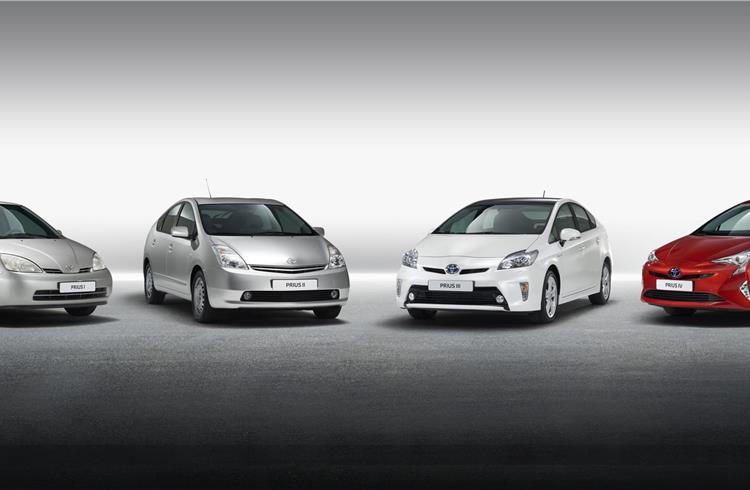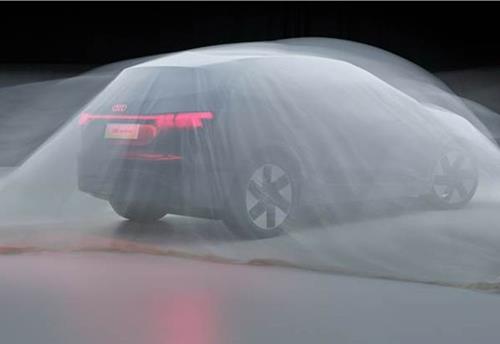Toyota Prius: 20 years of a hybrid movement
Since August 1997, global cumulative sales of Toyota hybrid vehicles have gone on surpass the 10-million vehicle mark at the end of January 2017 and the Prius has been a major contributor.
2017 marks 20 years of the path-breaking Toyota Prius – the world's first mass-produced hybrid passenger vehicle.
The Prius has been a vehicle with which the Japanese carmaker has focused on mitigating the environmental effects of automobiles. Based on the stance that environmentally friendly vehicles can only truly have a significant positive impact if they are widely used, the company has encouraged the mass-market adoption of hybrid vehicles across the globe.
Toyota launched the Coaster Hybrid EV in August 1997 and the Prius in December of the same year. Since then, global cumulative sales of Toyota hybrid vehicles have gone on surpass the 10-million vehicle mark at the end of January 2017. Ten million hybrids have saved 77 million tons of CO2 compared to the amount used by a petrol-powered vehicle of the same class. The volume of fossil fuel saved by Toyota hybrids translate into over 1.5 million roundtrips around the earth and the moon!
Toyota launched its first hybrid vehicle 20 years ago, and the circumstances surrounding environmentally friendly vehicles have since changed dramatically. The growing popularity of the Prius led to the creation of a new customer standard of choosing cars based on their environmental performance. As the number of companies developing and launching hybrid vehicles increased, so a new segment of ‘hybrid vehicles’ was established. In addition, now that customers around the world are opting to purchase hybrid vehicles and other fuel-efficient vehicles, the entire automobile industry has been able to contribute to the solution of global environmental problems.
"When we launched Prius, no one even knew what a hybrid was. Those who drove it were called geeks or other names. Today, thanks to those early adopters who gave Prius a chance, hybrids have grown in popularity, and have ridden a wave of success out of the unknown and into the mainstream," said Takeshi Uchiyamada, chairman of the Board of Directors at Toyota and known as the father of the Prius. "We are grateful to each and every one of our customers who has helped us achieve this important milestone of 10 million hybrid sales. We are committed to continue working hand-in-hand with them to tackle global environmental issues."
The Toyota Hybrid System (THS), which was incorporated in the first-generation Prius, evolved into THS II in 2003, and was thereafter rolled out in a wide range of Toyota vehicles. The fourth-generation Prius, which became the first vehicle to be built on Toyota New Global Architecture (TNGA 2), was developed not only with environmental performance in mind, but also with outstanding driving performance for customers wanting to purchase a car that was fun to drive.
EVOLUTION OF THE PRIUS
Prius concept car at the 31st Tokyo Motor Show: It was in 1993, when in-house discussions over a ‘vehicle for the 21st century’ intensified, that the development that led to the Prius got under way. In that year, the G21 Project was launched as a means to promote technological development, and, with project general manager Takeshi Uchiyamada at the centre, efforts began toward finding ways to achieve a groundbreaking improvement in fuel efficiency that would light the way in the 21st century.

With the improvement of engine efficiency its primary objective, the G21 Project at first set a target of raising fuel efficiency performance to 1.5 times the level of that of conventional engines. However, in a top-down move, Akihiro Wada, the executive vice president for R&D, ordered the high target of a two-fold improvement. In mid-1994, the basic G21 concept was approved, but it was not until it was decided later that a concept vehicle would be shown at the Tokyo Motor Show in 1995 that the hybrid approach entered the picture. A decision was made to give the concept vehicle a hybrid format because a hybrid offered the prospect of doubling fuel efficiency.
But from 1994, when development of the motor show concept vehicle was started, TMC went ahead with a major change to go in for a hybrid format for the production version as well. Thus, rather than centering on engine improvement, the project had shifted focus to the adoption of a hybrid system. The upshot was the completion in the autumn of 1995 of a prototype model that was exhibited at the Tokyo Motor Show and which used a capacitor as the electricity storage device.

1997-2003 First-generation Prius: The first-generation Prius was launched in October 1997 as the world's first mass-produced hybrid passenger vehicle. With a body compact enough to be registered with a 5-series number plate, the first-generation Prius was a stockier sedan than the current generation. At launch, the first-generation Prius had a fuel efficiency rating of 28.0 km/L in Japanese 10-15 test cycle, and came with the tagline: ‘Just in time for the 21st century’.
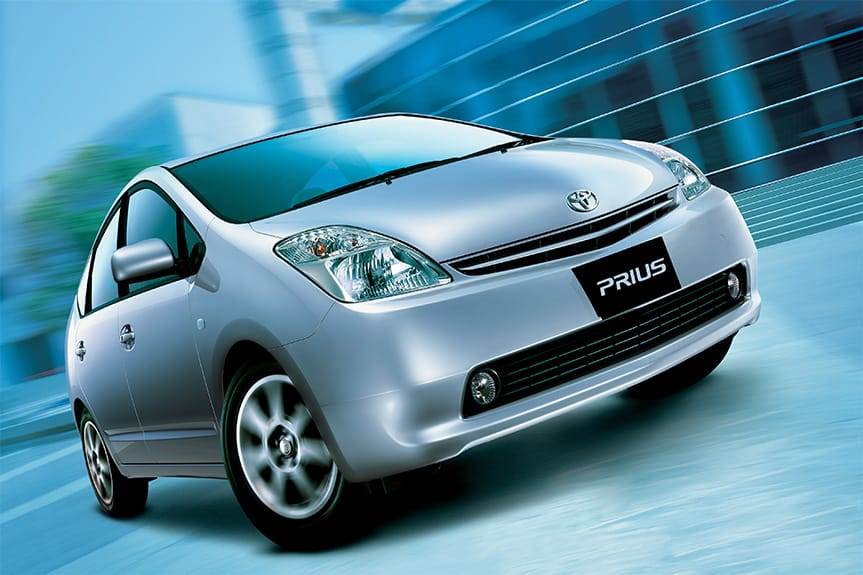
2003-2009 - Second-generation Prius: The Prius was completely redesigned for the first time in 2003. The new model was equipped with the Toyota Hybrid System II―an evolution of the previous THS―which improved its 10-15 test cycle fuel efficiency rating to 35.5 km/L, thereby cementing the image of the Prius as a fuel-efficient vehicle.
The styling was also changed: the highest point of the vehicle was now above the driver's head, and sloped gently downwards in both directions in what was labeled a "triangle silhouette." This new design not only improved aerodynamics, but also established an advanced-looking, unique Prius styling.
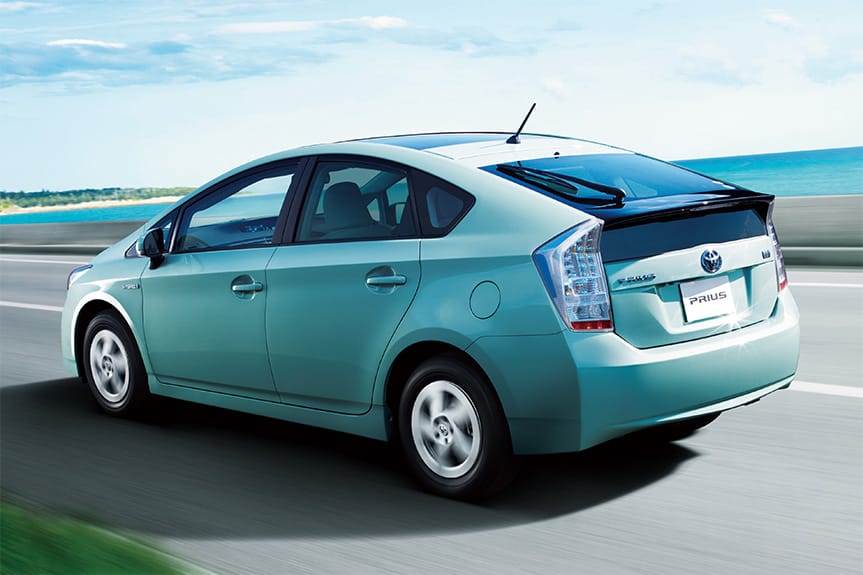
2009-2015 - Third-generation Prius: The third-generation Prius featured a slightly larger body than previous models, and the THS engine was increased in size from 1.5 liters to 1.8 liters.
While maintaining the same basic "triangle silhouette" as the second-generation Prius, the hood, headlights, and side view of the new model possessed greater modulation. The third-generation Prius achieved what was then the world's leading 10-15 test cycle fuel efficiency rating of 38.0 km/L.

2015- Fourth-generation Prius: There were no major design changes from the second to the third-generation Prius. However, the fourth-generation Prius, while inheriting the "triangle silhouette" design, now featured a more aggressive appearance with a lower center of gravity.
The new model combined an outstanding fuel efficiency rating of 40.8 km/L in Japanese JC08 test cycle with superb performance in a dynamic redesign.
Important development themes for the fourth-generation Prius were to make the hybrid system small and lightweight and reduce transmission loss. A high-revolution motor with higher output density achieved by a new winding method, a transaxle with multi-shaft positioning of the motors, the power control unit positioned directly above the transaxle, along with all other technologies, have been assembled to improve fuel economy and achieve excellent use of space.
INHERITING HYBRID TECHNOLOGIES
The Toyota Hybrid System (THS) that was incorporated in the first-generation Prius in 1997 evolved into the THS II in 2003. Since then, the hybrid system has been used in a wide range of Toyota vehicles.
The carmaker sees hybrid technology as a core technology and is engaged in wide-ranging development including electric vehicles, plug-in hybrid vehicles, and fuel cell vehicles.
Toyota's hybrid technologies, which include fundamental technologies necessary for the development of all its eco-cars, can be combined with a variety of fuels, and the company has positioned these technologies as core environmental technologies for the 21st century.
Adapting hybrid tech to next-generation eco-cars
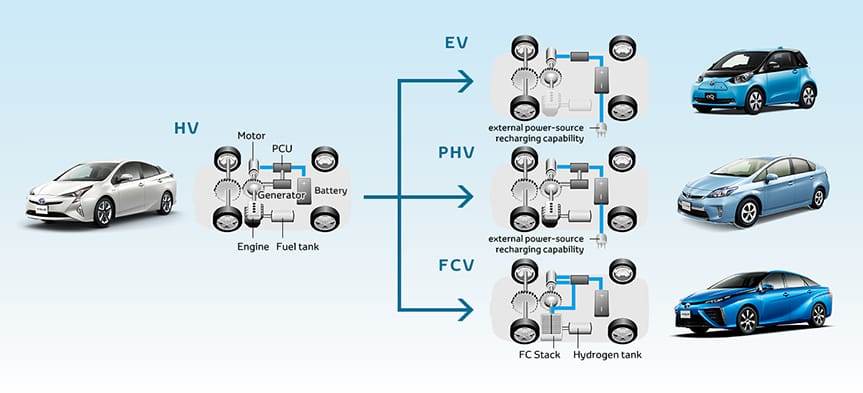
The Prius proved highly popular among customers, such that it became a byword for an eco-car. The fourth-generation Prius, which became the first model to be based on the Toyota New Global Architecture (TNGA), was developed to deliver not only outstanding environmental performance but also superb driving performance, so that it would be chosen by customers as a car that was fun to drive.
In February this year, Toyota Kirloskar Motor announced the launch of the updated Camry Hybrid and the Prius for India. The Camry Hybrid, the first and the only hybrid model to be manufactured in India, was first launched in India in August 2013 and since then has proven to be more successful than its standard petrol sibling with 95 percent of Camry sales being accounted for by the hybrid version. Till end-June, the Camry Hybrid has sold a total of 3,404 units in India. The Prius, based on TNGA (Toyota New Generation Architecture) platform, which is more of a hybrid technology demonstrator and a CBU import, has sold a total of seven units.
As a pioneering hybrid, the Prius has stuck true to its name which, in Latin, means 'to go before'.
RELATED ARTICLES
Netradyne expands UK operations via partnership with Intelex
The collaboration between Netradyne and Intelex marks a substantial leap forward in advancing road safety and fleet mana...
Audi Q6L e-tron, Q5 e-tron RS, SQ6 coming to Beijing motor show 2024
Long-wheelbase Audi Q6 e-tron, SQ6 based on PPE platform.
Sona Comstar opens new plant in Mexico to cater to growing EV demand in N America
The new facility, set up to meet the growing demand for high-quality driveline solutions for BEVs in North America, will...





 By Autocar Pro News Desk
By Autocar Pro News Desk
 07 Aug 2017
07 Aug 2017
 10399 Views
10399 Views



